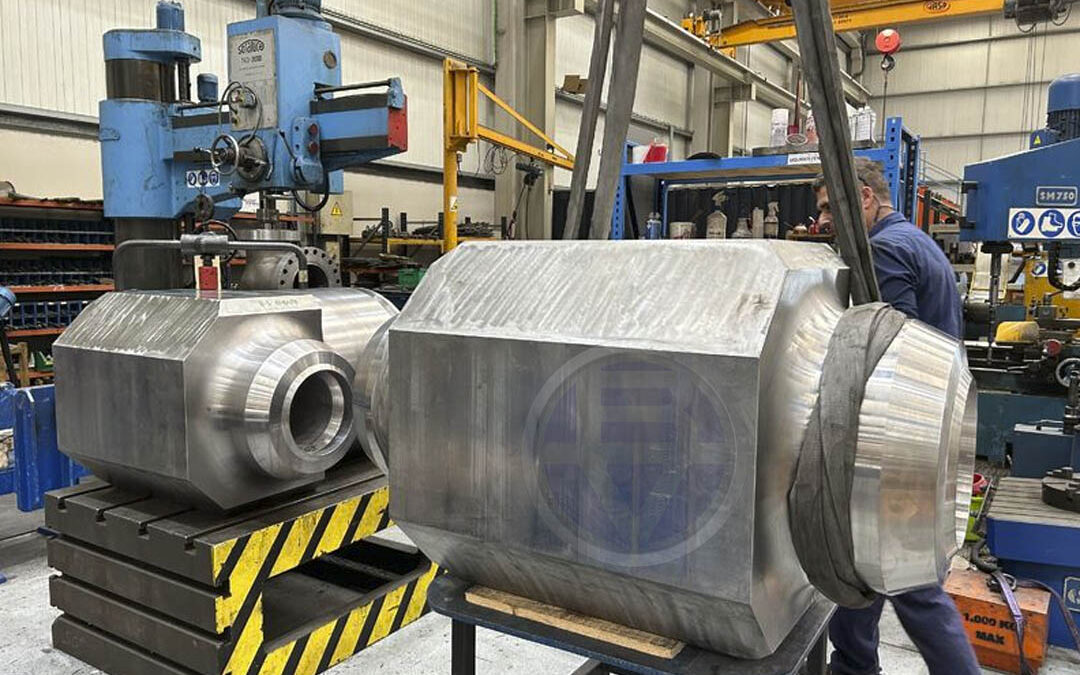Valve bypass installation, workshop detail: two 16” forged bodies in equalizing pipe with integral bypass installation stage, and behind, a gate valve, DN250 PN100, in lapping process.
Bypasses in valves are specialized features designed to provide a controlled flow path for fluid or gas even when the main valve is closed. These bypass channels are built directly into the valve body, forming an integral part of the overall valve design. The primary purpose of integral bypasses is to facilitate specific operational functions without fully opening the main valve.
One common application of integral bypasses is in throttling valves, where precise control of flow rates is essential. By partially opening the bypass channel, operators can regulate the flow without completely opening the main valve. This allows for fine-tuning of flow rates and pressure control, making integral bypasses valuable in systems where gradual adjustments are critical.
Another important use of integral bypasses is during the startup or shutdown of a system. By utilizing the bypass, operators can introduce or isolate fluids gradually, reducing the potential for water hammer, pressure surges, or other undesirable effects. This controlled approach helps enhance system safety and efficiency.
Integral bypasses are often found in various types of valves, including globe valves, control valves, and some types of ball valves. The design of the bypass is specific to the valve’s intended function and the requirements of the system it serves. The bypass may feature its own control mechanism, such as a separate valve or a plug, allowing operators to regulate flow independently of the main valve.
#valvebypass #industrialvalves #fluidcontrol #powergeneration

